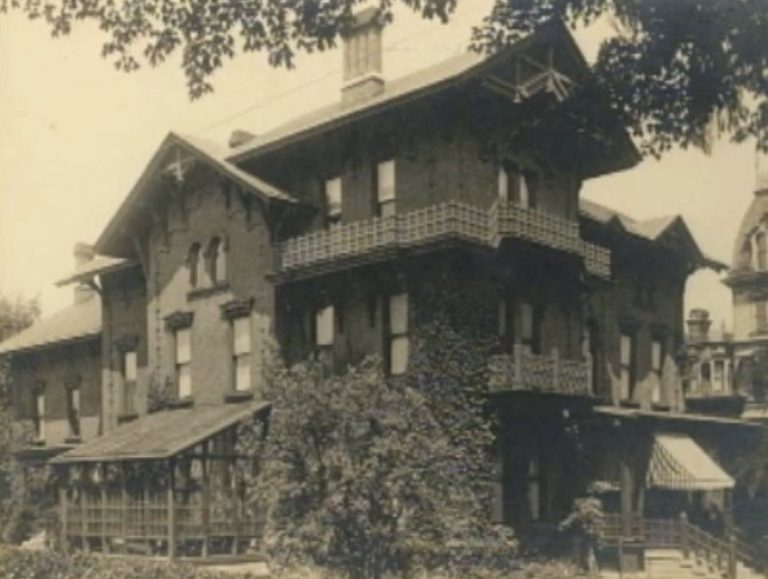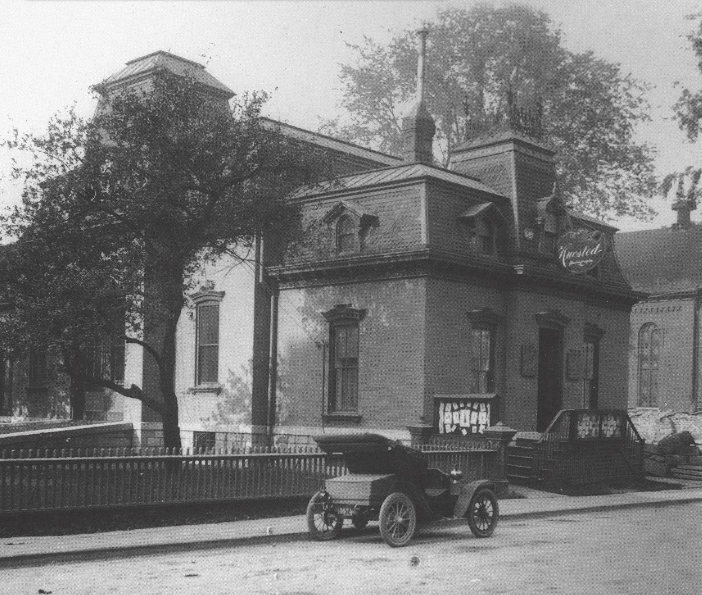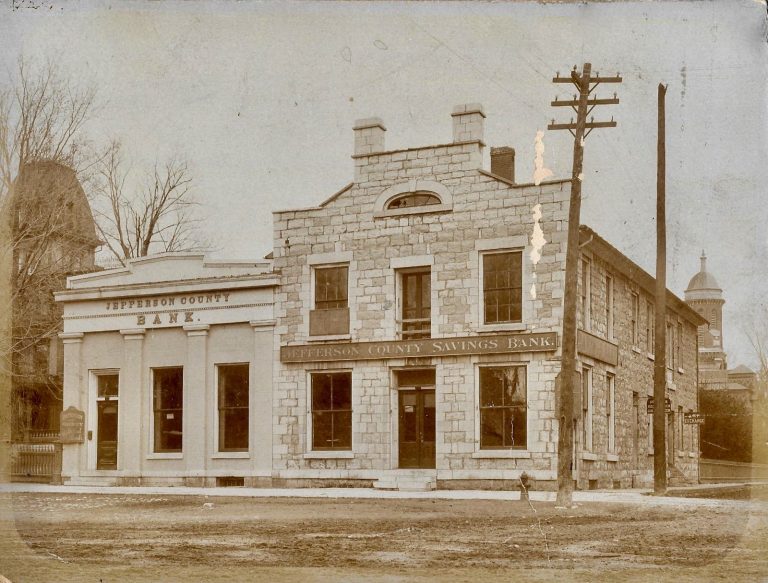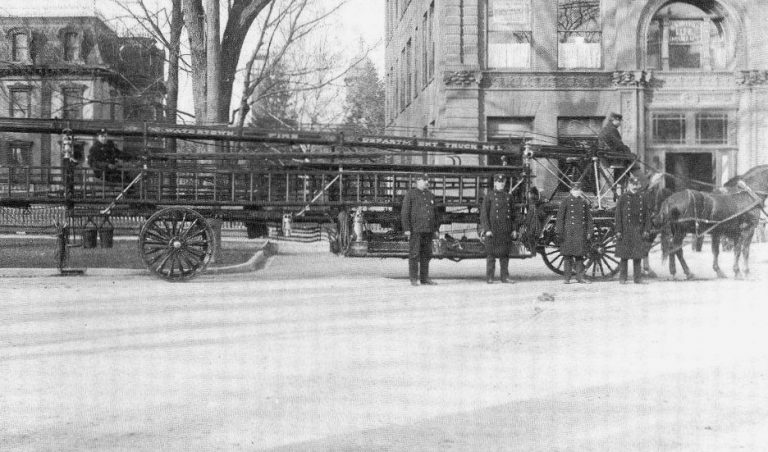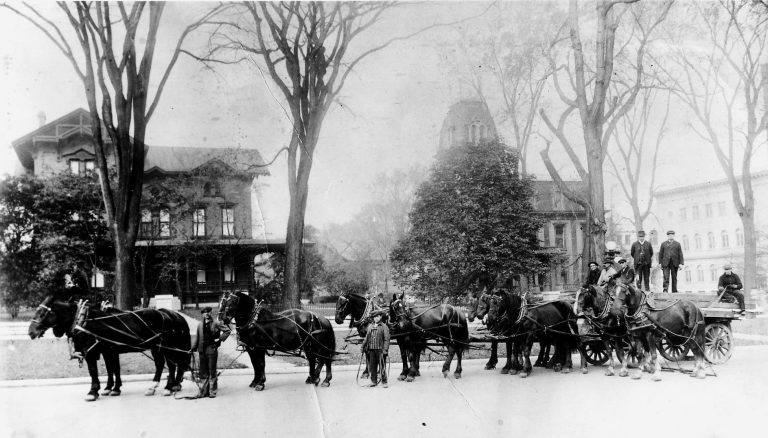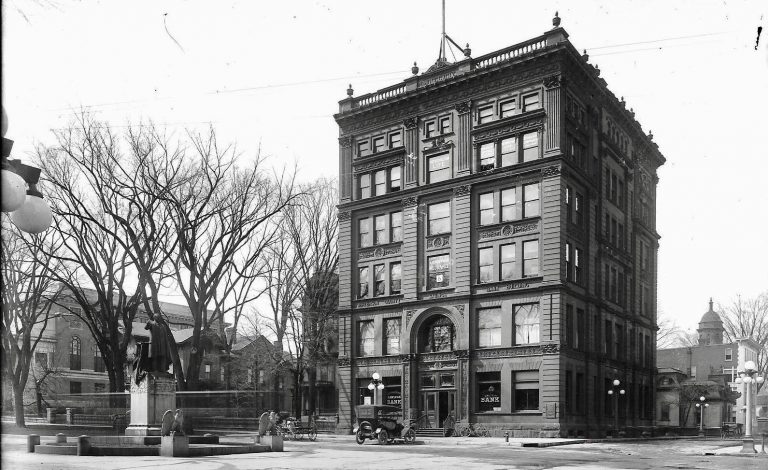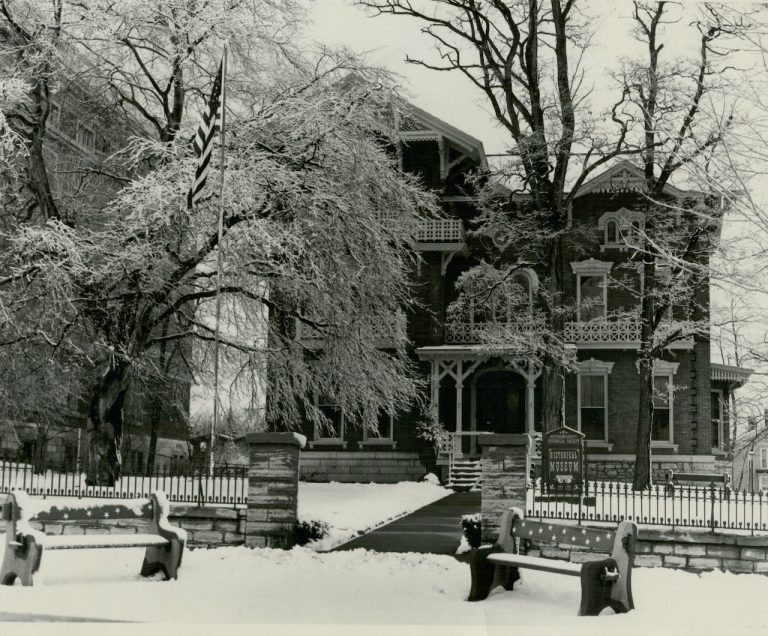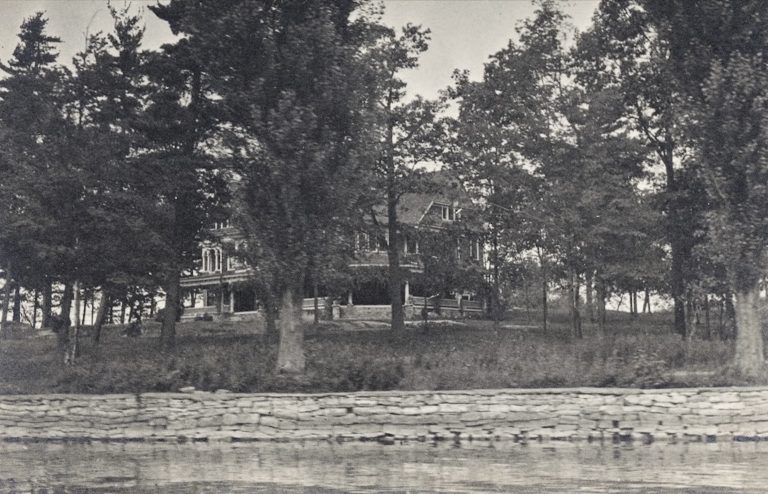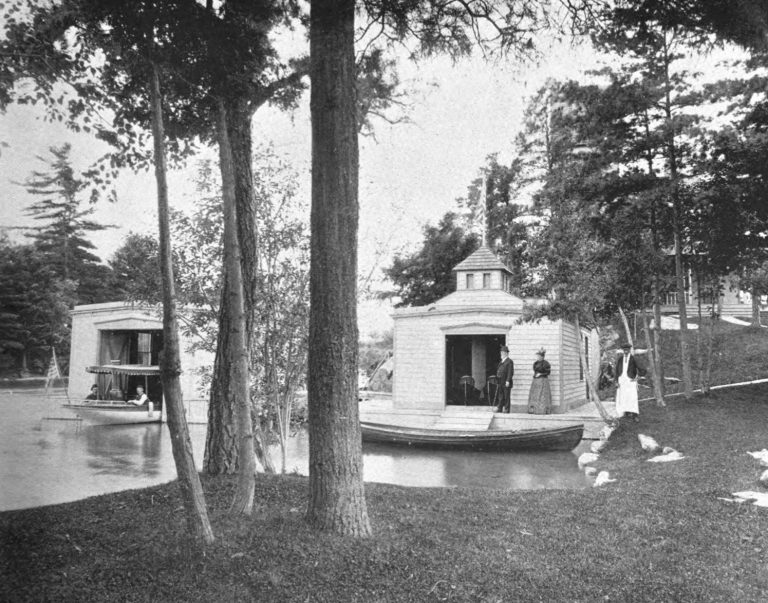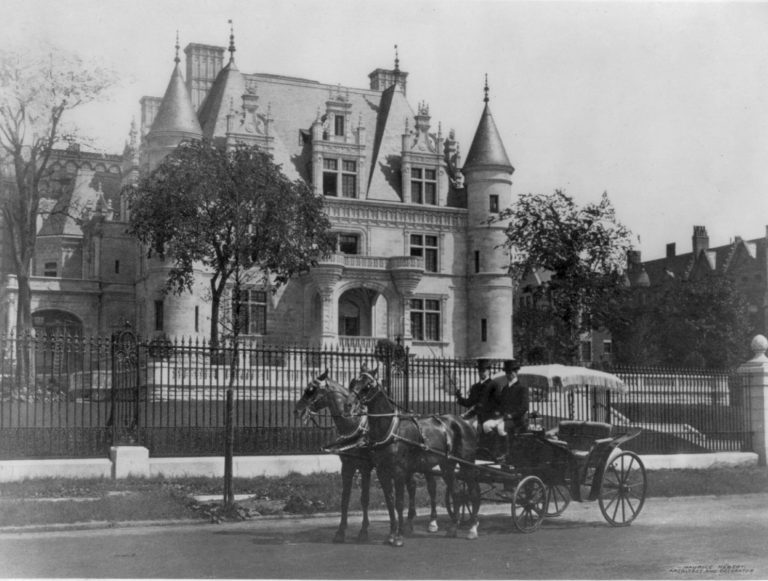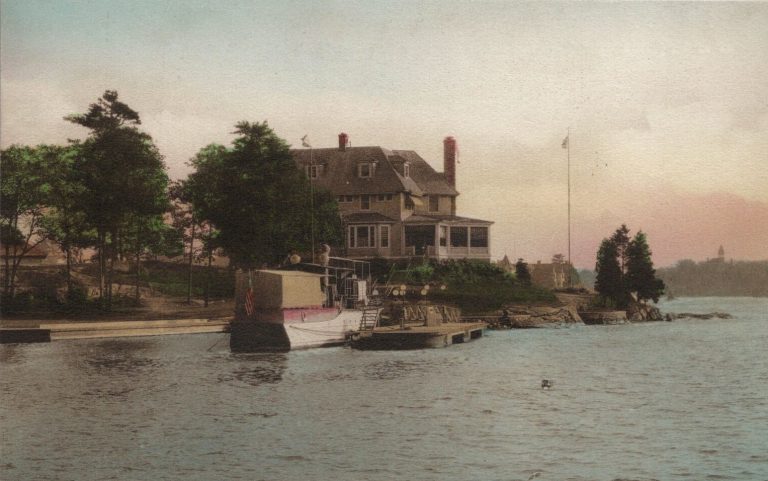The Oscar Paddock Mansion On Washington St. Along With The Other Paddock Mansions Were Sights To Behold
One of the old homes on Washington Street that has long since departed is the Oscar Paddock mansion, once located next to sibling Edwin Paddock‘s mansion, which has been home to the Jefferson County Historical Society for 100 years now (as of 2022), having been bequeathed as such upon the death of Edwin Paddock’s widow, Olive A. Wheeler Paddock. The Oscar Paddock mansion was unfortunately razed in 1917, five years before Olive’s death, though part of its estate, the former carriage house, would have a long history until its end came in 1971. Ironically, both the mansion and carriage house were victims of bank expansions.
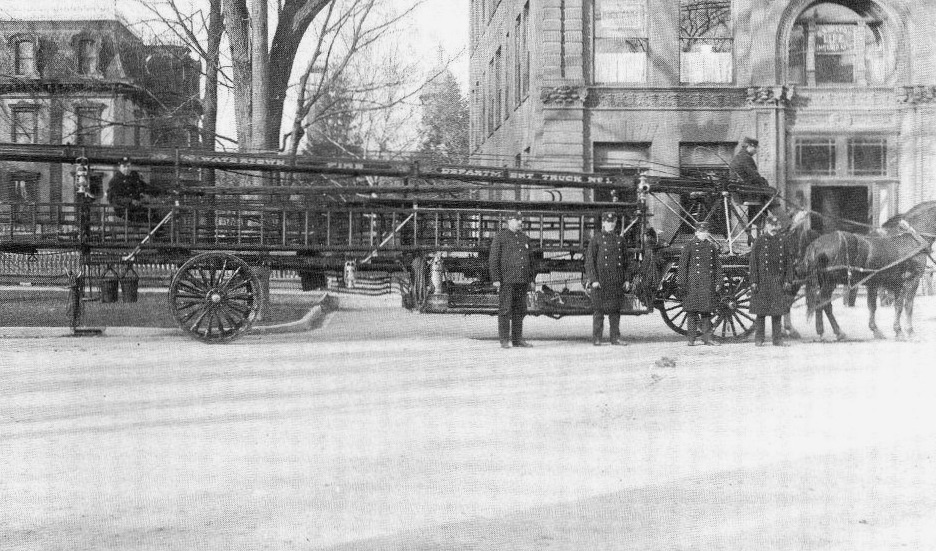
Oscar Paddock was born the oldest son to early Watertown pioneer Loveland Paddock in 1819, Edwin L. (1824) and George Foster (1836) being the other two, all of whom were well-known bankers. Loveland established the Black River Bank around 1825 after having conducted a store near the old American House on the American Corner long before it burned in the great fire of 1849, and subsequently replaced with the American Building and Woolworth Building. He later started the First National Bank as well. Oscar, Edwin, and George opened their own bank near the Paddock Arcade, known as the O. Paddock Bank in their early years, too.
It shouldn’t come as a surprise that the success of the family had the finest of the Washington Street mansions, the equivalent of Monopoly’s Boardwalk, though they wouldn’t become as such until after their father died in 1872. Loveland left behind an estimated $1.5 to 2 million estate ($1.75 million equalling over $42 million in 2022), a good deal of it from property. Loveland had originally occupied the lot that later saw the home of Jabez Foster built on it, that home being razed to make way for Edwin Paddock’s mansion in the mid-1870s.
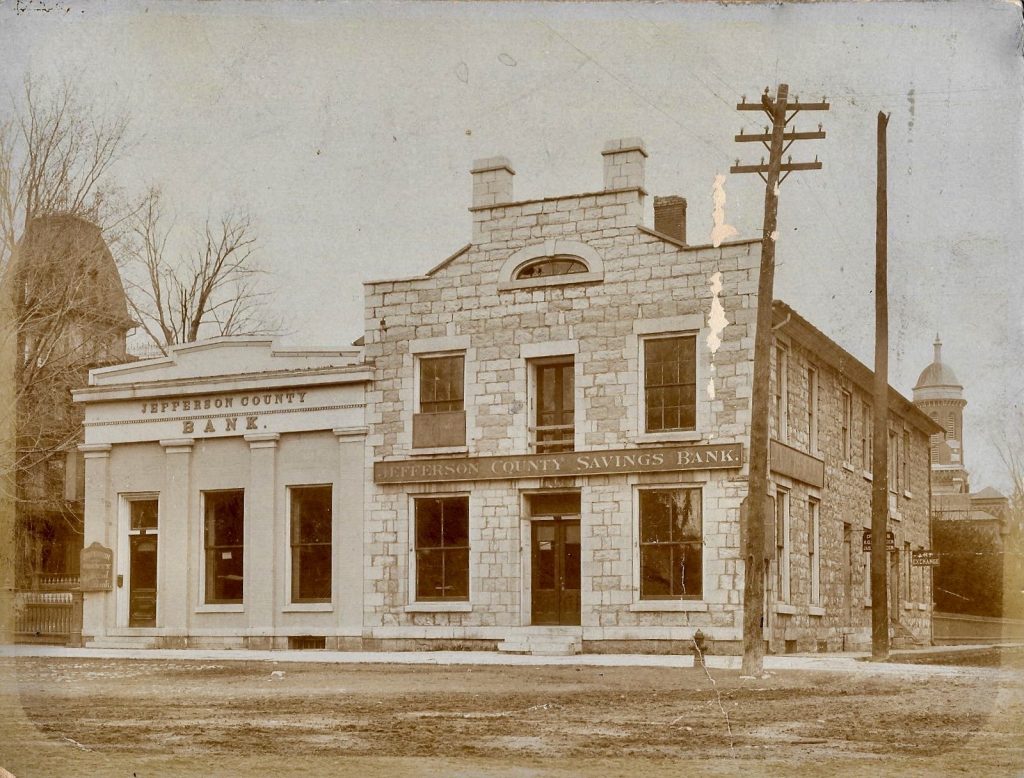
Oscar acquired the adjacent property formerly owned by Amos Benedict sometime in the early 1850s, of which no description could be found. On October 12, 1857, Oscar married Charlotte Frances Crawe, daughter of and brother of two very well-known and respected physicians in their field, Ithemere Bingham Crawe and John Mortimer Crawe. The wedding was held at the old Trinity Church on Court Street, where Charlotte and Oscar were lifelong attendants and Charlotte taught Sunday school for many years.
After the death of Loveland Paddock in 1872, his estate greatly benefited his sons, George receiving a reported $1 million while heading his own eponymously-named bank at the time. George greatly improved, until nearly unrecognizably so, the mansion in the next block that was built by Olney Pearce and later owned by General William H. Angell, another banker in the region. The property, after George Paddock’s makeover, was arguably one of the finest in the county and, in later eras, known as the Herring mansion, the home to the USO Club, and finally the American Legion.
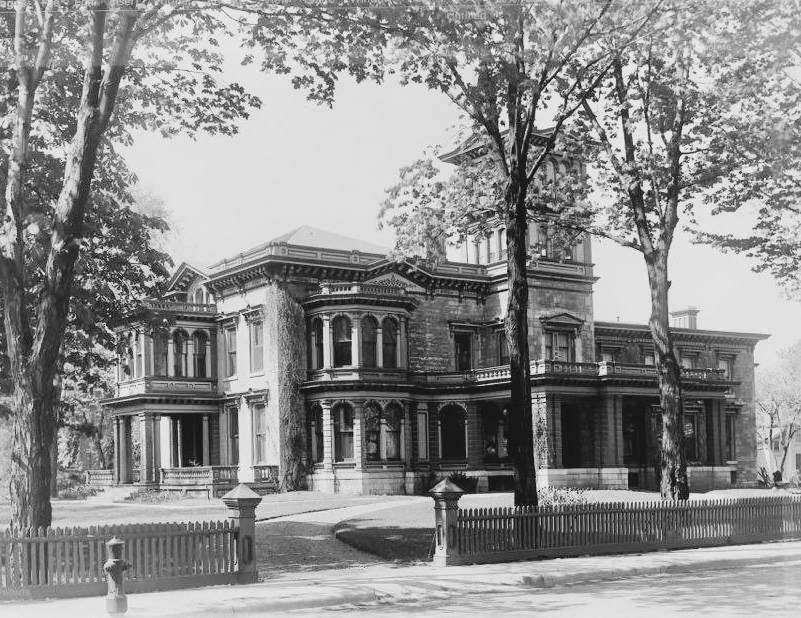
In August of 1875, Oscar and Edwin erected a large stone monument at the family plot in Brookside Cemetery. The Watertown Daily Times reported—
Six horse and eleven ox teams drew the die of the Paddock monument through the streets this morning towards the cemetery. The stone weighs 17 tons, and is next in weight to the base which weighs 23 tons. The sis the last of several parts of the monument, which will be an imposing and beautiful addition to the many attractions of Brookside cemetery. It was ordered and paid for by Oscar and Edwin L. Paddock.
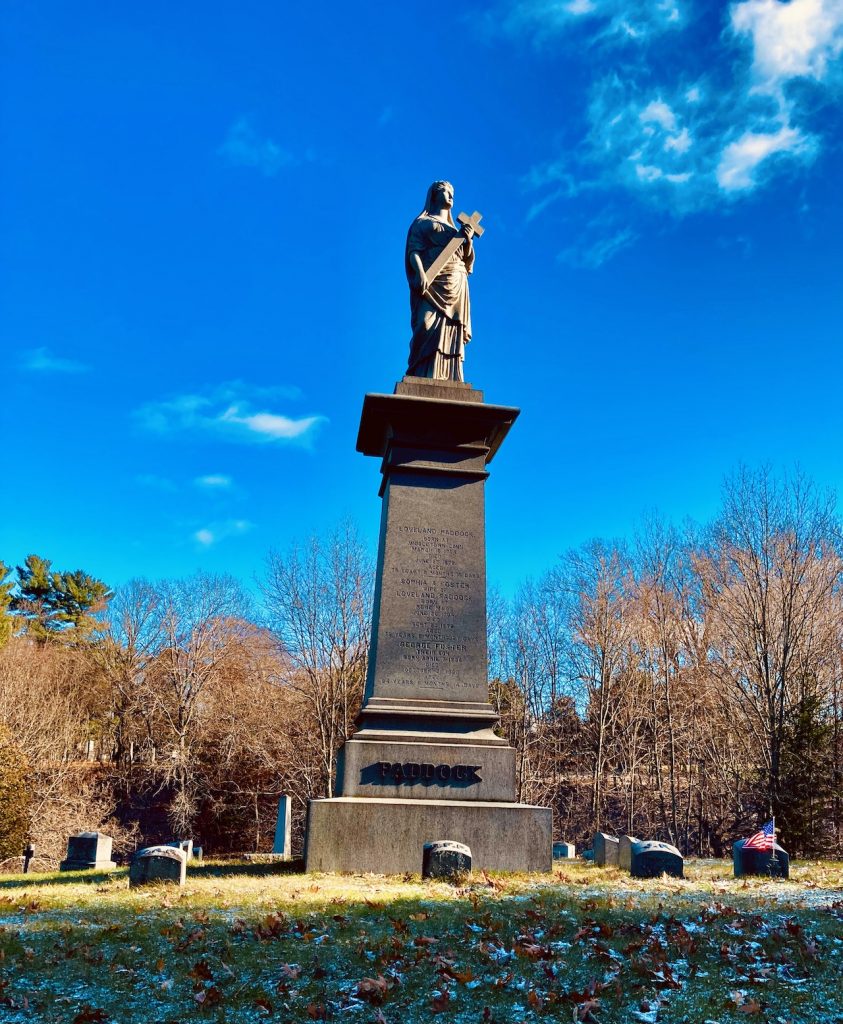
Edwin Paddock started construction on his own mansion in 1876. In addition, there were calls for Edwin to build the city its first public library. For a brief period in 1877, it almost happened. Edwin had procured the site for it, to be on the corner of Arcade and Stone Street, as well as had placed contracts for its construction. A few weeks later, the plans were suspended on account of Oscar leaving for an extended trip to Europe, which left Edwin to oversee Oscar’s business affairs, along with his own.
It was also around this time that George’s descent into bankruptcy with failed investments occurred – hence his non-involvement in the familial monument. In 1875, his bank closed its doors, and in 1881, his property was seized by the First National Bank, later to be sold to Uriah Lott of Corpus Christi, Tex. (originally Albany, N.Y.), for a paltry $17,000. His life was in a seemingly downward spiral. George moved to Chicago and struggled for the rest of his life, offered no more than a steady allowance from his family to live on.
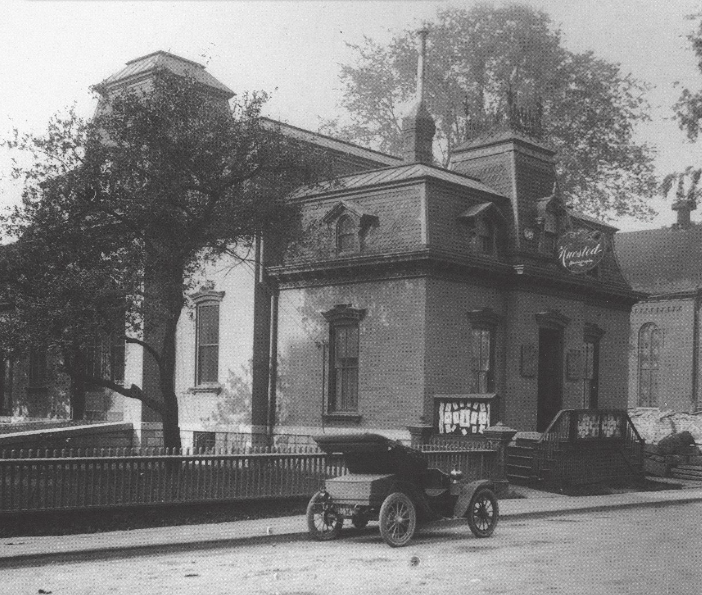
As for Oscar, he set out to add on greatly to the old Benedict home he had occupied for nearly 25 years, using it as the nucleus to build something entirely different and within the likes of 2nd Empire architecture. In fact, the three brothers had very different styles altogether, from Edwin’s mix of Swiss Chalet and Tuscan Villa with Eastlake styling being built next door, to George’s makeover of what was initially a Georgian-style mansion within the next block. Oscar also built a large carriage house on his estate at about the same time, one with a colorful history all its own.
Oscar Paddock, firstborn to Loveland Paddock, was also the first child to pass away in 1884 at the age of 65. His widow, Charlotte, continued to live on the estate for the remainder of her life, falling ill in the last several years of her life. In April of 1914, she became seriously ill at the home after suffering “a severe shock” that resulted in a blood clot in her brain. It was believed she would not recover, having been an invalid for the last several years prior, but she surprisingly did and lived for nearly two more years before passing away in 1916.
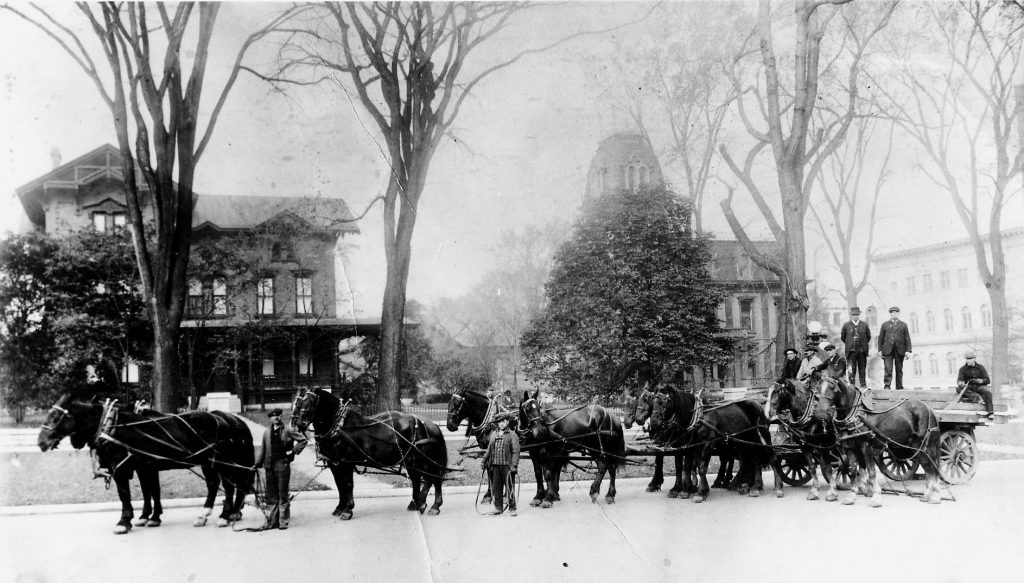
Charlotte’s obituary in the Watertown Daily Times read, in part—
Mrs. Charlotte Frances Paddock, 79 years of age, widow of the late Oscar Paddock, passed away at the family home at 216 Washington Street this morning at 5, following an illness due to her advanced age. For the past six years she had been a semi-invalid.Her death was not unexpected.
Mrs. Paddock maintained the family home at 216 Washington Street after the death of her husband and lived in this city most of the time, although she traveled extensively. She was a collector of works of art and at the home there are many valuable vases, painting and other objects which she had acquired.
She is survived by two sons, Loveland and Frank S., and by one daughter, Mrs. (Charlotte Amelia Paddock) E. P. Martin. One son, Oscar, died a number of years ago.

In May of 1917, the Oscar Paddock mansion was transferred to the Jefferson County Savings Bank. Valued at $100,000, the purchase allowed the bank to expand by either building to the rear or the south side. According to The Times—
The present structure is a three-story frame building and is typical of the houses of 40 years ago. The interior immediately suggests size and stateliness. This is strengthened by the many oil paintings and statues with which the rooms are filled. The late Mrs. Oscar Paddock, who died Jan. 18, 1916, traveled extensively. She was a collector of works of art and at the home there are many valuable vases, paintings and other objects which she has acquired.
The woodwork of the home is especially noticeable for its finish which has received no attention since the house was built but still maintains the same luster and polish. Many of the pieces of furniture, paintings and other furnishings in the home, Mr. (Loveland) Paddock will be unable to place in his (new) home and is now considering means of disposal as the work of razing the house will shortly be begun.
The Jefferson County Savings Bank moved from its old location, in the tall bank building shown earlier on the corner of Washington and Stone Streets, to its new building next door, completed in 1923, now occupied by Community Savings Bank as of 2022.

